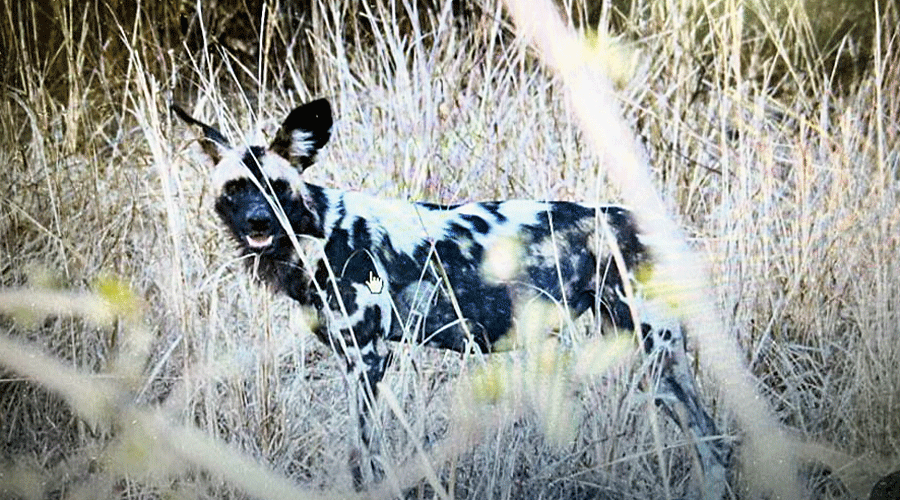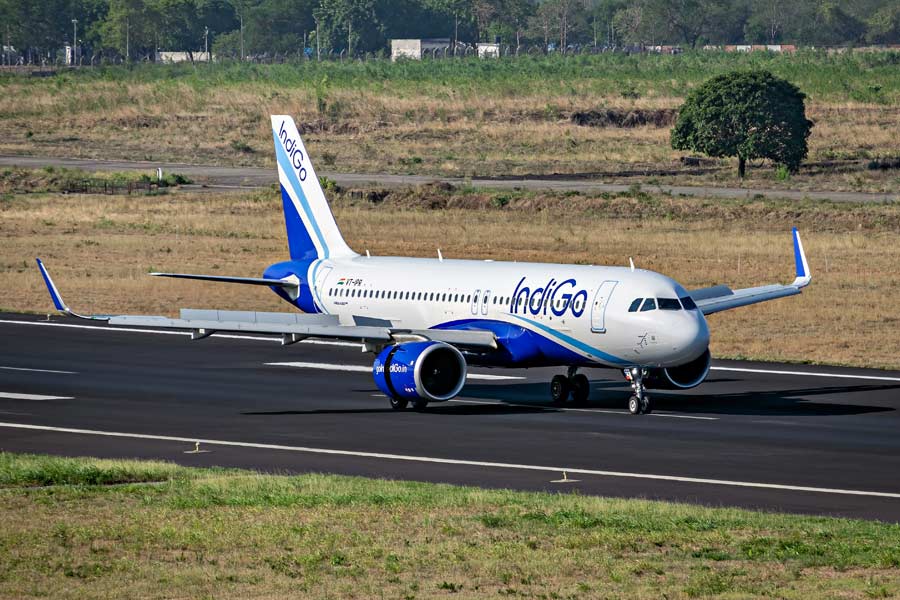The three sisters knew they had to leave home. They were African wild dogs, elite predators of the sub-Saharan region and among the most endangered mammals on Earth.
At three years old, they were in the prime of their vigour, ferocity and buoyant, pencil-limbed indifference to gravity. If they did not seize the chance to trade the security of their birth pack for new opportunities elsewhere, they might well die as they had lived: as subordinate, self-sacrificing maiden aunts with no offspring of their own.
And so, in October of last year, the sisters set forth on the longest and most harrowing odyssey ever recorded for Lycaon pictus, a carnivore already known as a wide-ranging wanderer. Over the next nine months, the dogs travelled some 1,300 miles, which, according to the scientists who tagged them, is more than twice the previous record for the species.
They lit out from their natal home range in the Luangwa Valley in eastern Zambia, crisscrossed Zambia and parts of Mozambique, skirted the edge of Zimbabwe and finally made their way back into central Zambia and settled in Zambezi National Park in Zimbabwe, where evidence suggests they remain to this day.
They navigated woodlands, grasslands, scrublands, farmlands, scrambled over steep escarpments, skittered down mud-slicked gorges and traversed the legendary East African Rift three times. They dodged traffic on busy village roads, tiptoed past lions, humans and other enemies and competitors, and crossed roiling waters that teemed with crocodiles.
They were tracked on their peregrinations by Scott Creel, an ecologist at Montana State University, and his colleagues at the Zambian Carnivore Program, who had outfitted one of the sisters with a GPS collar. That dog, known with affectionate formality as EWD 1355, became the central protagonist.
Although at any given point the researchers could be sure only of her location, wild dogs are so dependent on one another and so averse to solitude that the sisters probably stuck together for the entire expedition. Their next order of business, the researchers believe, is to start a new pack of their own.
“It’s miraculous they survived,” said Matthew Becker, chief executive and a manager of the carnivore program. “There were so many human and ecological threats that could have ended this incredible journey.”
Paola Bouley, a carnivore expert who had worked with African wild dogs in Mozambique’s Gorongosa National Park, said: “We’ve been watching with excitement, and nervousness, too. These dogs made history.” The extent of their Homeric wanderings, she added, “demonstrates how important it is to protect the larger landscape”.
Herewith, an annotated “dog log” of the sisters’ transnational trek and the lessons it holds for the conservation of wild dogs and other carnivores around the world.
Oct. 10, 2021
Rain, rain, rain. The rains typically don’t start until November, but already low areas are flooded and rivers threaten to breach their banks. The 21 members of the Luamfwa dog pack don’t mind. Breeding season is over, the pups are out of the den and the dogs are roaming across their 116-square-mile home range with predatory brio.
Wild dogs are beautiful in a brutal, be-glad-you’re-not-an-impala sort of way. They have black faces, glittering amber eyes, camo-printed coats of white, black and tan, white-tipped tails and large oval ears that are as tall as their snouts are long. If the word “dog” makes you think of a beloved Labrador retriever, don’t. African wild dogs dangle from an outlying twig on the dog family tree, having separated from other canids some six million years ago and evolved in eccentric independence ever since. Even their vocalisations defy family norms. African wild dogs don’t howl or bark like wolves or domestic dogs; they twitter, chirp, squeak and hoot like birds.
EWD 1355 and her sisters make their move, pulling away from the rest of the Luamfwa pack and heading southwest. They are in standard dog-dispersal mode, trotting along in a fairly straight line at eight minutes per mile, one-sixth of the pace of their hunting sprint. They travel at dawn and dusk and rest during the day.
Nov. 7, 2021
The dogs pass below the southern tip of South Luangwa National Park and beyond the range patrolled by both their natal pack and a neighbouring pack of similar size, the Stork Colony dogs.
EWD 1355 knows those neighbours by sight, sound and smell; they don’t interest her. In dispersing from their birth packs, wild dogs avoid inbreeding, and the Stork Colony dogs are too familiar for comfort. Best to keep moving.
Nov. 8 to 24, 2021
The sisters enter what is, for them, foreign territory, with all attendant threats: hunters bearing guns, snares set by poachers, cars, rabid domestic dogs, other carnivores.
Dispersal is a dangerous business; more than half of itinerant wild dogs die within a year of departing their pack. The sisters jog onward, rarely pausing to eat. They search for signs of other wild dogs, fresh faces, potential mates. Nothing, nobody but humans. The sisters turn away sharply and disappear into the background like scattered smoke.
Nov. 25, 2021
The dogs reach the banks of the Luangwa River — 300 feet wide there and turgid from weeks of steady rain. Here, they hesitate. The river is home to one of Africa’s largest crocodile populations. So be it; the dogs have braved razor-toothed waters before. They plunge in, single-file, and dog paddle furiously across the strong current. One sister pulls herself onto the opposite bank, then another follows. They twitter madly on shore until the last sister scrambles to safety.
Nov. 26 to Dec. 13, 2021
Heading west, the sisters reach the Luembe game management area, where prospects look promising. Several packs of wild dogs live in Luembe, and one of them might be ripe for infiltration. The sisters find a pack and start shadowing it, assessing its composition and strength.
African wild dogs are inescapably social animals. They are evolved for life in a pack. Only through disciplined teamwork and a relentless, balletic athleticism can the 50-pound dogs pull down a 300-pound antelope, latching onto the nose and rear, disembowelling it from below.
In attaining a state of bonded interdependence, wild dogs have become a bit like social insects — termites with fur. Reproduction is the province of a pack’s alpha pair, while the non-breeding adults contribute unstintingly to pup protection and feeding.
On occasion, helper adults regurgitate so much meat to their young charges that they nearly starve themselves to death. And why not? Pack members are nearly always close relatives, and keeping younger siblings, cousins, nieces and nephews alive is one form of heraldic persistence. “Everybody is chasing the same goal, and kin selection gives them incentives” Creel said.
Some subordinate dogs sit in waiting, rising to alpha status if the resident king or queen dies. But the royal pair that begot EWD 1355 and her sisters in the Luangwa Valley in 2019 showed no sign of retiring. Moreover, the pack had been getting big and unwieldy, conditions that spur the urge to disperse.
EWD 1355 and her sisters tail the Luembe dogs, scanning for signs of weakness. If they can oust the alpha female and her handmaidens, they can move into their place — and afterward sort out which among them will become the new fecund queen. “I’ve seen dogs with sores on their faces, from fighting for leadership,” said Henry Mwape, an ecologist with the Zambian Carnivore Program. “Everyone thinks, ‘It might be me.’”
But odds are it won’t be. “Only a tiny fraction of the population ever breeds,” Creel said. “Far less than 10 percent.”
Dec. 14 to 23, 2021
Finding themselves outnumbered, EWD 1355 and her co-conspirators turn tail and resume their migration, retreating southward from Luembe in linear bursts along the Luangwa River.
Dec. 24, 2021 to Jan. 17, 2022
The sisters reach the Great Rift Valley, a gnarled seam in the continental cloth that is so long it is visible from outer space. They ricochet from the east slope to the west slope and back again, staying within regions — game management areas, forest reserves — that offer relative protection. When they encounter signs of human habitation, they either turn away or sprint through it.
Wild dogs have a genius for avoiding trouble — a legacy, Creel believes, of their evolutionary past. The major meat-eaters of Africa compete with each other for large prey, and theft is often part of the strategy. Wild dogs are among the most proficient hunters in mammaldom, capturing their prey roughly half the time; a lion’s kill rate is only 25 per cent.
But the dogs’ small size puts them at a serious disadvantage, and a single 420-pound male lion can easily step in and claim a pack’s fresh catch as his own. Spotted hyenas will also trail after wild dogs on the hunt, and if more than two or three are playing pirates, they probably will prevail over the spoils. African wild dogs have thus evolved to stay under the radar, communicating in twitters best captured by wild dog ears, and steering clear of places where lions and hyenas — and now humans — abound. After five million years of contending with larger carnivores, “they’re pre-adapted to move through difficult landscapes,” Creel said.
Jan. 27, 2022
A mad dash eastward through unprotected land to reach the Luangwa River. Really? Swim across it again — at the height of flood season? Shut up and start paddling.
Feb. 18, 2022
If you think crocodiles are bad, try trucks. The sisters reach the Great East Road, the heavily travelled main artery that connects Lusaka, the capital of Zambia, to Lilongwe, the capital of Malawi. Presumably after looking both ways, the dogs race across the four-lane highway. They then thread their way through a belt of villages and farms. Chances are, Mwape said, “nobody even knew they were there”.
Feb. 22, 2022
Time for another stamp on the passport: Team 1355 enters Mozambique.
March 7 to 25, 2022
Creel and his colleagues are worried. For two weeks, the dogs have hardly budged, and when they have moved, they’ve seemed desultory, directionless. The scientists fear the worst: EWD 1355 has been injured — from a snare, a fight, a fall.
March 26, 2022
The researchers sigh in relief as the dogs jump back into high gear, abandoning the settlement area and heading southeast along rough, uninhabited terrain.
April 20, 2022
A few miles from the border junction of Mozambique, Zimbabwe and Zambia, the dogs once again confront and ford the Luangwa River. They are back in their birth country of Zambia, and they head toward Lower Zambezi National Park, possibly drawn in by the rich, musky odor of a resident pack of 29 wild dogs. The Zambezi dogs are renowned for having mastered the art of preying on African buffalo, enormous and aggressive bovids that few wild dogs dare approach.
May 2, 2022
After traversing the length of the park, the dogs opt to settle down in its midpoint, at least temporarily. The local pack is too big for any thought of overthrowing the alpha female, but there is another option: raid the bachelor pool. If the marathon sisters from Luamfwa can tempt a few Zambezi brothers away from the resident pack, maybe they can start a new dynasty of their own.
May 14, 2022
Or maybe not. Inexplicably, the sisters abandon Lower Zambezi National Park and head northwest.
May 24, 2022
The dogs approach the fringes of Lusaka. Their grand walkabout has now connected the dots of virtually every protected area in the region, underscoring the importance, researchers say, of widely distributed safety zones where hunting and human interference are kept to a minimum. But Lusaka, a city of about 2.5 million people, is decidedly unsafe for them. The dogs spin around and head back to Lower Zambezi National Park.
June 11, 2022 to present
EWD 1355 and company are once again shadowing the Zambezi dog pack, cruising for mates. And why not? The sisters are young and lusty; they have 1,300 frequent flier miles under their pelts. “Persistence,” Creel said, “is a wild dog’s strong suit.”
New York Times News Service










